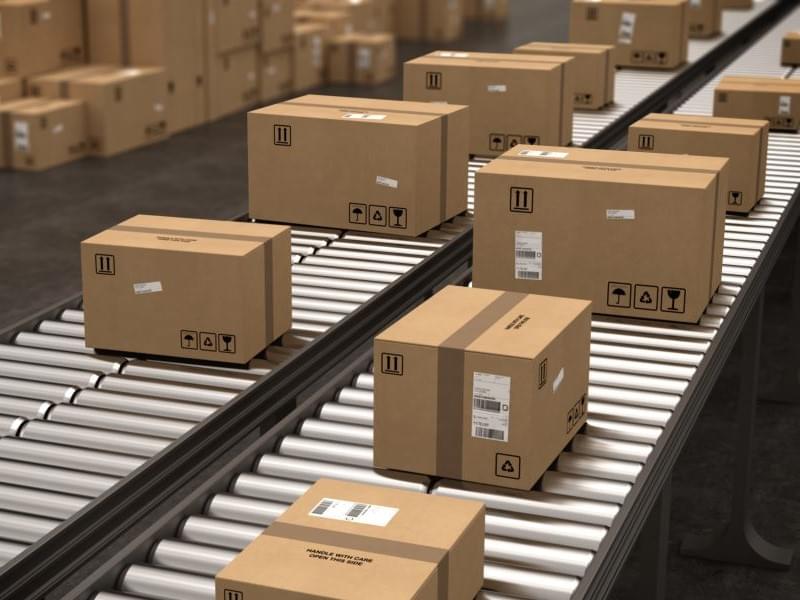While the global e-commerce market continues to grow, it appears that the reported demise of brick-and-mortar retailers has been overstated. A new market report released by Smithers,
The Future of E-Commerce Packaging to 2027, has identified that consumers, who have been deprived of the physical shopping experience over the last couple of years due to the Covid-19 pandemic, have welcomed the reopening of in-person shopping in most markets.
According to Smithers’ most recent data, the global market for e-commerce packaging in 2022 is estimated to be worth $63.60bn, having increased by an annual average of more than 20.1% since 2017. Market value rose by nearly 12.5% within the last year, which was significantly slower than the growth rates experienced during the height of the Covid-19 pandemic when a surge in online shopping occurred throughout much of the world. Further growth is envisaged for the global market, with value sales projected to increase by an annual average of around 14.6% during the years leading up to 2027.
Total global sales of corrugated packaging for e-commerce applications amounted to an estimated 29 million tonnes in 2022, a figure that has grown by >150% in absolute terms in the last 5 years. Volume sales of flexible mailers and protective mailers accounted for 19.5 million square metres in 2022, with an almost equal split between the two formats. Protective packaging volumes have seen an increase of 90% since 2017 but are expected to slow over the next 5 years. All sectors are forecast to experience further increases in consumption during the period between 2022 and 2027, albeit at a slower rate than in 2020 and 2021.
Post Covid-19 activity
Covid-19 had a profoundly positive effect on the global e-commerce market and for retailers with well-established e-commerce businesses this period was the perfect storm. Consumers were locked down and unable to visit physical stores and became cash rich as their travel, entertainment and holiday budgets were left unspent. However, recent macro-economic trends in Western Europe, North America and China provide a strong indication that e-commerce growth rates from 2021 and 2022 are unlikely to be seen again.
The global e-commerce market
Demand for e-commerce packaging is, and will continue to be, linked to the performance of the global e-commerce market. According to Smithers’ recently published data, total global e-commerce sales are expected to be worth more than $5.54 trillion by the end of 2022, a growth rate of 12.2% vs 2021. The current growth rate, and forecasts to 2025, indicate a slowing of market growth which reached peak levels during the pandemic (in 2020 market growth was +17.9% and in 2021 it was +16.3%) as sales surged with consumers spending their disposable income at home. The global figure includes a wide range of products and services purchased via the internet.
Growth in developing markets
The highest ecommerce sales and packaging growth rates in the five years are expected to be seen in the less-developed regions: Other Asia Pacific (Indonesia, India, Philippines, Vietnam and Malaysia), South and Central America (Brazil and Argentina) and the Middle East and Africa (Turkey, Egypt and Morocco). This growth will result from increased smart phone penetration, improved warehousing and logistics infrastructures and growing consumer confidence in digital commerce.
Technology developments
Several technology developments are helping to drive e-commerce sales across the globe, these include: wider geographic internet connectivity and faster internet speeds; the development of faster mobile networks (such as 5G); and increased smartphone penetration. These trends are particularly prominent in the world’s less-developed regions where populations are significantly higher than those in the Western world.
M-commerce, online sales via mobile devices, is still increasing but its mesmeric growth, as a proportion of overall e-commerce sales, has slowed significantly. There are two main drivers of this trend. In Europe and North America e-commerce consumers will happily browse for purchases on smartphones but many still prefer to make the final transaction on their laptop or PC (not dissimilar to the “flick to click” e-commerce trend seen in the early 2000s where consumers would browse paper catalogues before making their final transactions online).
In Asia Pacific, Africa & Middle East and South & Central America internet penetration is reaching high levels and a large percentage of consumers own smartphones, so the increase in m-commerce is likely to be far less dramatic than that seen over the last five years.
